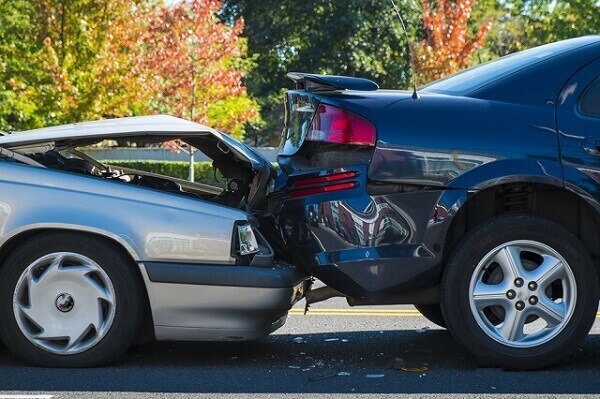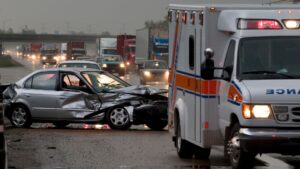
Ridesharing companies, such as Lyft and Uber, allow you to get around without needing a car and are a more convenient option than public transit. You can use these services after a night on the town (to avoid a potential DUI), as a ride to and from the airport, or even just going from one place to another for errands.
While there are benefits to using rideshare services – including saving yourself from having a car payment, insurance, or even parking fees – there are risks too. Using a ridesharing service means that you put your safety in the hands of a stranger. While this is true for public transit, operators in public transit go through special training, carry special driver’s licenses, and have thorough background checks. The driver picking you up from your rideshare app does not have any of this and there is no government oversight either.
So, when you schedule your next rideshare appointment, you need to ask yourself whether you trust that person that you do not know, and a person who could potentially have a few traffic tickets or accidents on their record.
The Most Common Reasons for Ridesharing Accidents
Anyone can be in an accident, and just because someone is working for a ridesharing service does not mean they are unsafe drivers. While they are involved in accidents that are not their fault all of the time, the focus of this article is to highlight the reasons ridesharing accidents are common – so that you can make an informed decision before you use one of these services in the future.
Speeding
A rideshare driver makes their money with each trip they take on, and therefore, it is no surprise that these drivers will often speed to get their fare to their destination quicker so that they may pick up the next rider and make more money. Furthermore, they might try to get a rider there faster for a higher tip – after all, who does not like arriving ahead of schedule?
Sadly, speeding is reckless and can lead to a fatal accident. According to the National Highway Traffic Safety Administration (NHTSA), speeding is deadly. In fact, an estimated 9,000 people die each year in speed-related accidents.
Distraction by Mobile Device
Drivers on these ridesharing apps are often driving around their area, waiting for their next assignment on the app. This is known as deadheading. You most likely already know how dangerous it is to use a mobile device while driving, so it should be no surprise that it is a common reason ridesharing drivers cause accidents.
A driver can also be distracted by their device while driving a passenger, such as texting, updating the app, or pre-planning their next pickup. If they are unfamiliar with the area, they might be distracted by their mobile phone’s GPS service, which could lead to less time looking at the road and more time looking at the screen.
Inexperienced Drivers
In some ridesharing services, the people behind the wheel do not require special training like taxicab operators or public transit drivers. Instead, these services offer “tips” to train their drivers and rules for how they must operate the app, but these are not enforced.
Furthermore, a ridesharing driver could be any age – and the younger a driver, the less experience they have behind the wheel.
Drowsy Driving
Most drivers working for ridesharing programs use these passenger pickups as a way to make extra money in combination with other forms of employment. That means you may have a driver picking you up from your red-eye flight at the airport who also just worked a 9-5 job and has not slept. Drowsy driving is just as dangerous as drunk driving, and can result in a lowered attention span, dozing off, or even delayed reaction times.
Chatting while Driving
There are numerous ways to be a distracted driver, and having a conversation while driving is one of them. A driver might chat with their passenger, and while having that conversation, they pay less attention to the road ahead. Even an experienced driver will have decreased attention during an active conversation.
Distracted driving, as defined by NHTSA, is any activity that takes a driver’s attention away from the road, including talking to people in their vehicle.
Understanding Your Rights If You Are Injured in a Ridesharing Accident
If you are the passenger of a ridesharing service, and that driver causes an accident, you may find yourself facing an uphill battle. Not only do these services claim their drivers are independent contractors – which means they take no responsibility for their action – but you are limited to the driver’s insurance.
Most rideshare services require that their drivers have specific coverage, but they do not always check to ensure that coverage is continued. When they skip responsibility, you may be stuck with a driver that has the state’s minimum requirements and no coverage when operating their personal vehicle commercially.
While it sounds like you have no options, you are not alone. The law is starting to finally catch up with ridesharing apps and these services, which means you can get the compensation you deserve after an accident as a passenger or just involving a ridesharing vehicle.
It is best to contact a local attorney if you were the victim of this type of accident.
How an Attorney Can Help
An attorney will fight for your right to compensation – whether against the ridesharing service or the driver’s insurance company. You need someone on your side that is experienced handling these types of nuanced cases, and the team at Brett McCandlis Brown & Conner PLLC can help.
We will ensure you get compensation for your medical expenses, including any future medical costs, lost wages, pain, suffering, and emotional trauma. You should not have to shoulder the bill for the actions of a ridesharing driver. Instead, let us focus on getting you the financial compensation you deserve after this type of accident.
Call our team today to schedule a no-obligation consultation. You can also connect with us online by filling out an online contact form.


